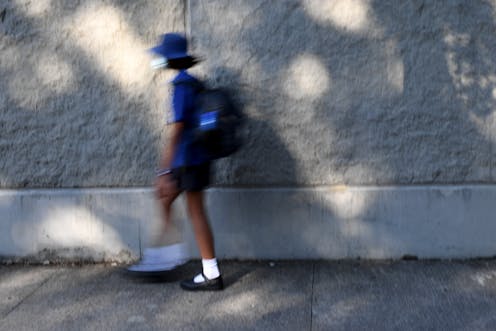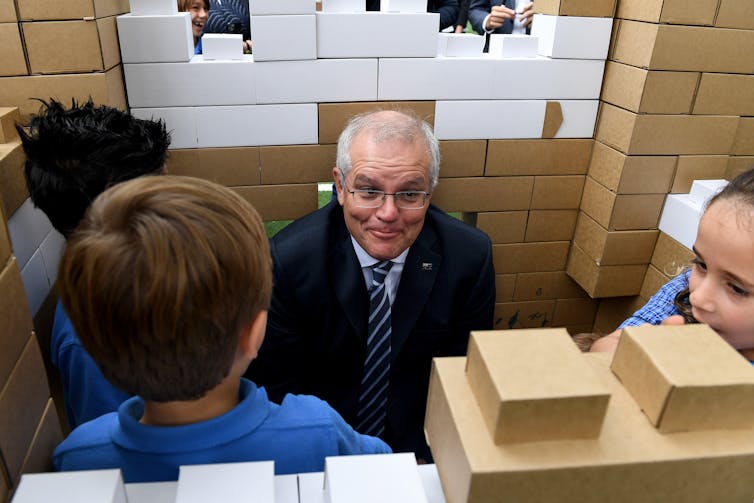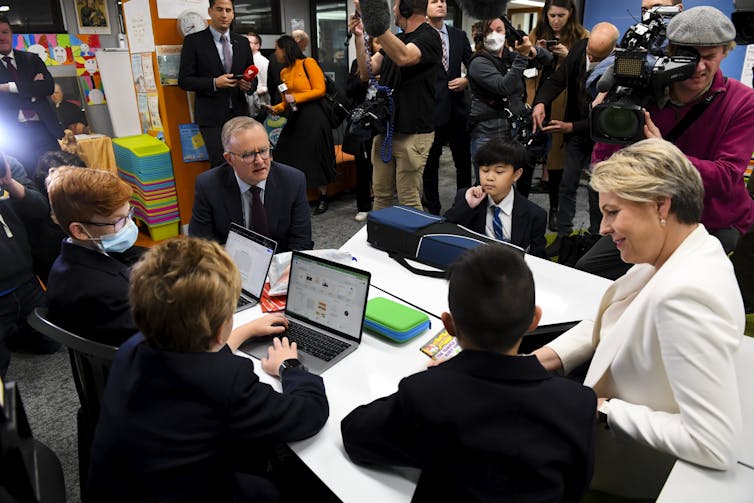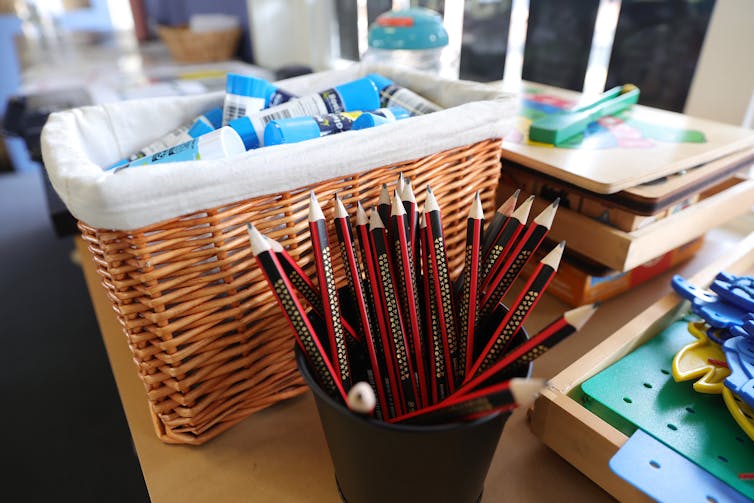
The 2022 election campaign has not exactly been a policy fest. And one critical area we have heard very little about is schools.
This is surprising and concerning. Not only have schools and students weathered two years of disruptions under COVID, but the sector faces serious issues, including a drop in student performance, teacher retention, inequity particularly for marginalised groups and ongoing funding issues dating back a decade.
There has been speculation the Coalition is hesitant to campaign on schools because education minister, Alan Tudge is currently in career limbo (and has been limiting his public appearances).
Meanwhile, Labor’s education spokesperson, Tanya Plibersek, appeared to be initially frozen out of the campaign, although in the past couple of weeks has been more visible.
Read more: Here's what the major parties need to do about higher education this election
Politics aside, what are the major parties offering?
The Coalition, ALP, and The Greens are all pledging a similar investment in mental health and well-being services, and support for respectful classrooms, particularly regarding violence against women. The largest difference between them is an (ongoing) ideological divide when it comes to the curriculum. Meanwhile, the big issues go ignored.
The Coalition
The Coalition is focusing its efforts on “raising school standards” and “improving the quality of teacher training”.
This includes creating a one-year diploma for initial teacher education. Given the current demands on accreditation bodies, this might create administrative burden. It would also need schools to shoulder a greater responsibility for “on-the-job” training.

The Coalition also has a focus on traditional skills such as literacy, numeracy and STEM, with a clear focus on what the LNP terms “traditional classrooms”, which one can assume to be of students seated in rows with a single classroom teacher. There is an emphasis on Christian and ANZAC content and phonics for reading.
It also includes specified teaching methods through explicit instruction, which is the teacher standing at the front providing information for students to learn rather than explore or discover.
They also have pledged A$61.4 million to continue the school chaplaincy program.
The Labor Party
Labor’s headline policy is to offer students with an ATAR score over 80 up to $12,000 a year to study education.
This is part of the party’s bid to improve teacher standards, although it has been criticised by experts who say it implies the current teacher workforce is not up to scratch, which could be interpreted as quite insulting.

Like the Coalition, it also offers no significant investment or policy to address current staffing shortages or teacher workloads – this is presumably being left to the states to “fix”.
Labor has promised $440 million for building upgrades, improving air quality and mental health support. The ALP also made a $6 million commitment to e-safety in schools. In terms of the curriculum, the ALP provide little detail - they do not detail teaching methods or content.
The Greens
The Greens have pledged $49 billion to fully fund public schools to the Gonski model. At the moment, public schools are funded to only 90% of their recommended school resource standard.
Read more: Still 'Waiting for Gonski' – a great book about the sorry tale of school funding
Like Labor, they also promise $400 million for infrastructure, with an additional $224 million to improve air quality post COVID.
Uniquely, the Greens also have made a commitment to close segregated school settings, but have not costed this. Segregated settings are where particular groups of students are taught separate to mainstream students, such as schools for children with a disability. The United Nations and multiple research studies have highlighted significant issues with this segregated settings.
One Nation and the United Australia Party
One Nation have very little policy detail available on education. In one paragraph, they say they want to focus more on traditional values and teaching methods. Then they say they don’t want to see “Western, white, gender, guilt” shaming in the classroom but students should be taught the benefits of a “free-thinking” society.
Similar to One Nation, the United Australia Party has just a few sentences of education policy, which is to remove HECS debt and inject $20 billion into education, although how this money can be used is left unspecified.
The bigger picture
Overall, the critical issues facing education have been left to the states to deal with.
There is new funding available, but neither the Coalition nor Labor are offering significant change from what we are currently doing in schools.
Both are looking at initial teacher education and thus the quality of teachers to improve results (which is highly denigrating to current teachers and does not support the current system).
But much more change is required. It’s important to note that additional funding over the past decade has not changed Australia’s educational decline. Tinkering with the curriculum has also not changed the decline, and neither have previous attempts to so called improve “teacher quality”.

Genuine solutions would include an increase to teacher wages, relieve administrative workloads, and allow teacher to focus on planning and teaching within reasonable time requirements and greater support to disadvantaged students.
In other words, it needs a significant reappraisal of the schooling system and conditions for students and staff.
Read more: Planning kids? You should know the major parties' parental leave policies before you vote
David Roy has and continues to work with and consult politicians in Education across all parties, without prejudice.
This article was originally published on The Conversation. Read the original article.







